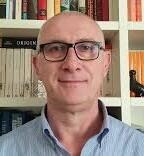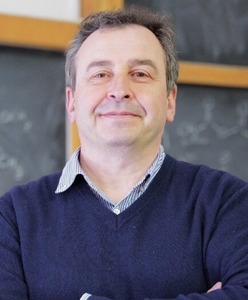Speakers
Confirmed speakers
Davide Audisio,
CEA-Saclay, Université Paris Saclay, Department of Bio-organic Chemistry and Isotope Labeling, Gif-sur-Yvette, Île-de-France (FR)

Late-stage carbon labeling and isotope exchange
Carbon-14 radiolabeling is a unique tool that, in association with -counting and -imaging technologies, provides vital knowledge on the fate of synthetic organic molecules, such as pharmaceuticals and agrochemicals.1 However, traditional multistep radio-synthesis and the associated costs have limited its utilization. Our group is interested in the development of novel methodologies, compatible with all carbon radioisotopes, which enables their insertion at a late-stage of the synthesis, while utilizing the simplest isotope sources such as carbon dioxide [14C]CO2, carbon monoxide [14C]CO and cyanides [14C]CN-. The presentation will cover historical perspectives, the state of the art and our recent results in the field.
Philippe Dupau,
DSM-Firmenich (CH)

Homogeneous Ruthenium-Catalyzed Selective Hydrogenation in Sustainable and Cost-Efficient Perfumery Ingredients Industrial Synthesis
Over the past two to three decades, discovery, development and production of various ruthenium complexes led to successful industrial implementation of homogeneous hydrogenation towards perfumery ingredients industrial synthesis. Based on activity and selectivity achieved, such a catalytic transformation appeared as a true practical alternative to the use of NaBH4 and LiAlH4 in reduction of aldehydes, ketones and esters. In addition to cost efficiency improvements, replacement of such stoichiometric reagents also led to higher both safety and sustainability industrial processes performances.
Manuela Melucci,
Institute of Organic Synthesis and Photoreactivity (ISOF), National Research Council (CNR) (IT)

: Design and synthesis of molecular materials, composite and related technologies for water quality control
The development of advanced materials and technologies for the monitoring and removal of emerging contaminants (ECs), including per- and polyfluoroalkyl substances (PFAS), is critical to ensuring the safety and sustainability of water resources. This contribution presents our recent advances in the synthesis, characterization, and application—at both laboratory and pilot plant scales—of innovative materials designed for the treatment and real-time detection of ECs in drinking water. The work focuses on: i) the development of thiophene-based molecular materials and alginate-based composites for photocatalytically driven degradation of ECs; ii) the use of covalently functionalized graphene nanosheets and their composites for EC adsorption and sensing applications. iii) the fabrication and scale-up of graphene oxide-based hollow fiber adsorptive membranes, alongside the valorization of production waste for the development of new sustainable sorbent materials.
Stefano Menichetti,
Dipartimento di Chimica “Ugo Schiff”, Università degli Studi di Firenze (IT)

Playing with Sulfur Electrophiles: From Multipotent Antioxidants to Helical Shaped Advanced Materials
The aim of the lecture is to describe how the introduction of electrophilic sulfur functionalities on different substituted aromatics opens the way to the synthesis of a plethora of heterocyclic systems with peculiar properties and activities. In particular, the [4+2] cycloaddition of transient dienic ortho-thioquinones with styrenes has been used for the preparation of phenolic chain breaking antioxidants possessing the antiradical profile of catechins (Vitamin P) and tocopherols (Vitamin E). On the other hand, consecutive catalytic electrophilic aromatic sulfenylation processes have been exploited for the assembling of thia-bridged heterohelicenes, a peculiar class of geometrically stable [4]helicenes that have found application in material science as redox switches and spin filters.
Francesco Mutti,
Van’t Hoff Institute for Molecular Sciences, HIMS-Biocat, University of Amsterdam (NL)

Engineered Enzyme Cascades for the Synthesis of Chiral Amines, Amides, and Nitriles
The biocatalytic synthesis of chiral amines offers numerous advantages over chemocatalytic methods in terms of efficiency, selectivity, environmental sustainability, and applicability to diverse substrates. In this context, my group has focused on the synthesis of chiral amines from prochiral ketones using ω-transaminases (ωTAs), as well as alternative novel aminating enzymes such as amine dehydrogenases (AmDHs) and imine reductases (IReds).
We have created a new family of AmDHs based on the enzyme scaffold of an ε-deaminating l-lysine dehydrogenase (LysEDH). The best variant, LE-AmDH-v1, was highly thermostable, retained its catalytic activity after incubation at up to 50 °C for several days, and was applied to the synthesis of pharmaceutically relevant amines in enantiopure form.
AmDHs, IReds, and ωTAs were also incorporated into biocatalytic cascades with other enzyme families for the conversion of alcohols, styrene derivatives, α-amino acids, or α,β-unsaturated ketones into chiral amines or amino alcohols containing up to two stereogenic centers.
One example is the biocatalytic conversion of alcohols into α-chiral amines (i.e., a hydride-borrowing cascade) using alcohol dehydrogenases (ADHs) and an AmDH; we developed this biotransformation using isolated enzymes, co-immobilized enzymes, or E. coli cells in vivo. The concept was extended to the synthesis of amino alcohols with two stereogenic centers.
During these studies on biocatalytic alcohol oxidation, we also observed an unprecedented conversion of alcohols into nitriles catalyzed by an alcohol oxidase variant, using only ammonia and dioxygen from air as reagents. More recently, we extended this cascade to the synthesis of amides.
Dario Pasini,
Dipartimento di Chimica, Università degli Studi di Pavia (IT)

From Defined Molecules to Sustainable Polymers for Organic Electronics
Organic electronic materials, π-extended organic compounds and polymers with suitable semiconducting properties, offer advantages such as flexibility, low cost, and easy processability using simple solution processing methods. They are typically obtained through multi-step sequences with high synthetic complexity indexes. I will discuss our recent approaches on the use of “cascade” reaction protocols to address single and double annulations to form thienoacene scaffolds such as naphthothiophenes, benzodithiophenes and anthradithiophenes, and their incorporation into π-extended oligomers and polymers. Their use in the context of bulk-heterojunction solar cells, thin film transistors and luminescent solar concentrators will be presented.
Joerg Scheuermann,
Department of Chemistry and Applied Biosciences, Institute of Pharmaceutical Sciences, ETH Zurich (CH)

DNA-Encoded Chemical Libraries (DELs) in drug discovery
DEL technology is based on small molecules individually tagged with a DNA barcode, which allows for the identification of target-binding ligands after PCR amplification and DNA sequencing. This strategy was co-pioneered by the Neri/Scheuermann group at ETH Zurich and has become an indispensable tool for small molecules drug discovery. The standard implementation, as integrated in most of the larger pharmaceutical companies, proves to be efficacious for small-molecule discovery. In this presentation, I will summarize the development of DEL technology and discuss aspects of DEL technology which still can be improved and which can enable a newly addressable chemical space.